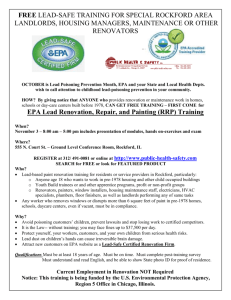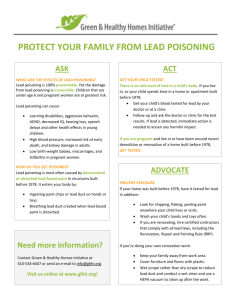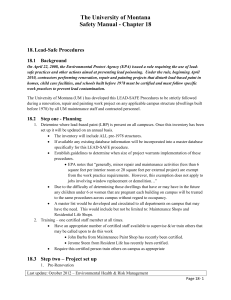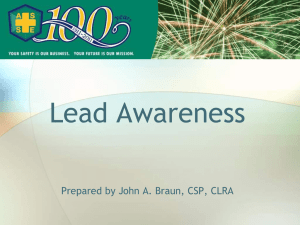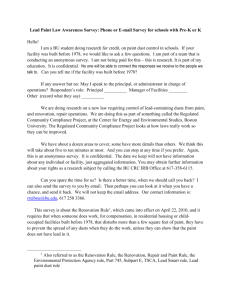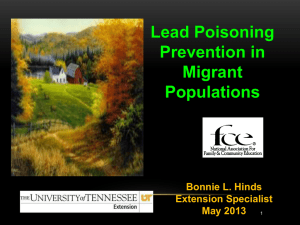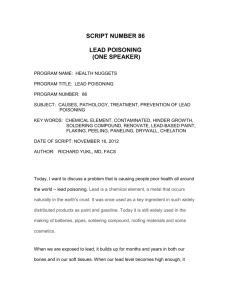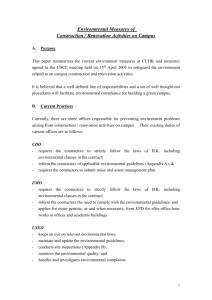Today I am announcing new requirements for residential contractors
advertisement
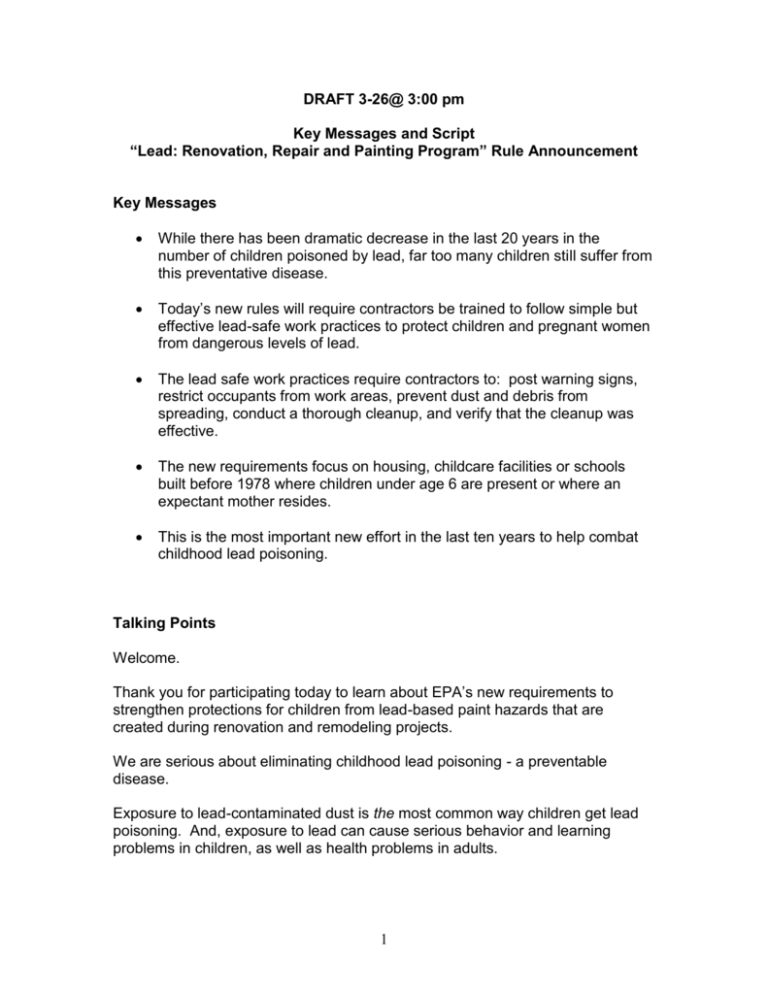
DRAFT 3-26@ 3:00 pm Key Messages and Script “Lead: Renovation, Repair and Painting Program” Rule Announcement Key Messages While there has been dramatic decrease in the last 20 years in the number of children poisoned by lead, far too many children still suffer from this preventative disease. Today’s new rules will require contractors be trained to follow simple but effective lead-safe work practices to protect children and pregnant women from dangerous levels of lead. The lead safe work practices require contractors to: post warning signs, restrict occupants from work areas, prevent dust and debris from spreading, conduct a thorough cleanup, and verify that the cleanup was effective. The new requirements focus on housing, childcare facilities or schools built before 1978 where children under age 6 are present or where an expectant mother resides. This is the most important new effort in the last ten years to help combat childhood lead poisoning. Talking Points Welcome. Thank you for participating today to learn about EPA’s new requirements to strengthen protections for children from lead-based paint hazards that are created during renovation and remodeling projects. We are serious about eliminating childhood lead poisoning - a preventable disease. Exposure to lead-contaminated dust is the most common way children get lead poisoning. And, exposure to lead can cause serious behavior and learning problems in children, as well as health problems in adults. 1 Many of you have hired contractors to renovate or remodel your home. I know these can be very exciting times, especially when the dust and debris is gone and everything is brand new. But we also want you to know that these projects in homes, daycare facilities and schools can disturb lead-based paint and create hazards. While lead based paint was banned in 1978, we are still dealing with it. For example, two-thirds of houses and half of the schools and day care centers built before 1960 have some lead-based paint. We know more needs to be done. So today we are announcing the most important new effort in the last ten years to help combat childhood lead poisoning. EPA’s new rule, which is being signed today, and called the Lead: Renovation, Repair and Painting Program – requires renovators and contractors of older housing, child care facilities and schools to use simple, effective lead-safe work practices to reduce lead dust. The requirements cover residential, public or commercial buildings where children under age 6 are regularly present as well as those buildings where an expectant mother resides. For this housing where renovation, repair or painting activities that disturb more than six square feet of lead-based paint in a room or where 20 square feet of lead-based paint is disturbed on the exterior, the new requirements must be followed. Contractors and maintenance professionals must be certified, their employees must be trained, and they must follow protective lead-safe work practice standards. By requiring contractors to be certified, consumers or building managers who are planning remodeling projects, will be able to identify those contactors who are trained in lead-safe work practices. Trained contractors will need to post warning signs to keep residents out of the work area, restrict occupants and pets from work areas, contain work areas to prevent dust and debris from spreading, including closing vents in the work area, conduct a thorough cleanup, and verify that their cleanup was effective. In order to give contractors the time necessary to get up to speed and train their workers, the new requirements will take effect in April 2010. 2 To help people know that these requirements exist, contractors will need to provide a copy of the new EPA Renovate Right pamphlet to homeowners, building managers, day care centers, schools, and occupants of older housing before beginning work. In order to get the word out, EPA has extensive materials on our web, as well as various brochures available, and these materials are available in both English and Spanish. Parents themselves can also practice important lead-safety tips like keeping children away from work areas, making sure children wash their hands frequently and eat nutritiously, and asking your doctor to test young children for lead exposure. Children under six are most at risk because their developing nervous systems are especially vulnerable to lead’s effects and are more likely to ingest lead due to their frequent hand-to-mouth activity. Today’s requirements are the newest component of the comprehensive Federal effort on lead that has been underway for many years. The goal of that effort is to eliminate childhood lead poisoning as a major public health concern. I’m happy to say that significant progress has been made already. In 1978, there were more than three million children with elevated blood lead levels in the United States. According to the Centers for Disease Control and Prevention or CDC, as of 2002, an estimated 300,000 children have elevated blood lead levels. That is a great improvement but not good enough. There is still work to do. This new rule is an important step toward halting lead poisoning of our Nation’s children. Again, we have extensive materials on our website to help educate those in the construction trades. The address to our website is www.epa.gov/lead, again: www.epa.gov/lead EPA and HUD also fund the National Lead Information Center at 1-800-424-5323 or 1-800-424-LEAD. They have brochures and can help answer questions too. Thank you for participating on today’s call. EPA will be glad to address any questions you may have. 3 4
